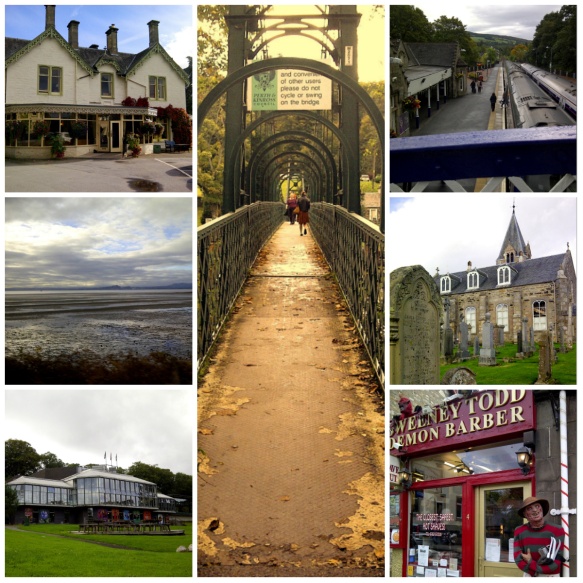On 1 February, it was World Hijab day. Its aim is to raise awareness about wearing hijabs and better understand the reasons and motivations for women to cover their hair in public.
I’m not religious myself and I personally don’t believe that a piece of clothing/jewellery/any other visual identification helps to bring you closer to your religion. But that’s my opinion and I respect anybody who does decide to openly show their religious orientation.
Since I enjoy seeing different perspectives, I chose to wear a hijab for a day (although not on 1 February). My personal hijab day was a normal day of the week, just to see whether or not it would influence me and my daily activities in any way. And even more so: to see if people would treat me differently.
The first challenge: putting on the hijab
You might think it’s easy to wear a scarf, but a hijab is a totally different story. As I was completely new to this, my hijab-wearing friend helped me getting it right and tight. Although she did poke me with one of the small pins (twice!), I liked the preparation and being close with my friend. And as we both stood there, in a tiny bathroom both wearing hijabs, I felt we were much closer all of a sudden.
First encounter with my chubby face
The first look in the mirror was a bit of a shock, I must admit. Usually I use my hair to distract from my chubby face, but with the hijab my cheeks just seemed endless. I also normally don’t wear make-up, so that really didn’t help either.
This made me realise that women who wear the hijab and look nice got to look super-stunning without their hijab. Would you agree with my logic?
The first few hours
I attended a lecture at my university and my classmates all wondered, stared and asked me why I was doing ‘this‘ (as in: why I was wearing a hijab). But after a few minutes, we all focused on the lecture and I totally forgot that I was wearing a head scarf.
My lecturer asked me later if there’s a reason I’m wearing a hijab – I totally understand that people may ask as I haven’t been wearing one before, but how funny/sad would it be if you just approach a woman with hijab and ask “Excuse me, Miss, why are you doing ‘this‘?”.
Walking around university I felt a bit insecure and was more than usual checking if people were looking at me. I felt they did, but I am not sure if that was because of the hijab or because I was looking at everyone. It was a vicious circle.
Getting into it
By the afternoon I was used to wearing my hijab and forgot more and more that I actually wore it.
Walking home, I saw a lady with hijab and instantly felt we were somehow connected. Completely stupid, incorrect and generalising, but that was my gut feeling. Whether or not this is applicable to women wearing their hijab regularly, I don’t know. But I like the thought that you feel close to a person, even a complete stranger, because you have something in common. In an abstract way, I think it lowers the barriers to get to know each other easily and feel connected through belief or convinction.
I spent the evening socialising at a group dinner and only the bathroom mirror reminded me that I was wearing a headscarf. So not a big deal (to me at least).
Wearing a hijab: how did it feel?
Wearing the hijab felt rather nice, like I was being protected. It did get hot at times and slightly itchy, and I wondered how it would feel to wear it all day long in the summer or warmer climates. Has anybody invented hijab fans?
But remember that I also wasn’t used to wearing one in the first place. I like the analogy of wearing glasses for the first time. I never wore any, so I assume wearing a pair on a first day would be rather annoying, and probably take time to get used to.
Overall hijab rating: why not?
Again, I’m not religious and won’t be changing my opinions because of this experience. I do however now understand how some women identify with their hijab and see it as their protection, privacy, religious statement, obedience, or even fashion item.
I was alienated to the idea of covering my hair all day (assuming I’m in public and men are around) as it does not resonate with anything I believe in. However, having worn it for a day (and one day only probably won’t give me an understanding of discrimation or burden or even religious grouping) I feel closer to the idea, and also closer to women who wear the hijab.
After all, we make our own choices, and as long as women choose on their own to wear the hijab, I don’t see why they can’t do it at work, while driving a car, going shopping or else. Has anyone ever discriminated against people wearing a Christian cross necklace around their neck?
Religion should be practiced voluntarily and if people choose to do it in a particular way, let them – as long as they don’t interfere with or pressure others.
I’m aware this is a quite greyzone-area topic, but I’m happy to hear about your views on this. Have you ever worn a hijab? And also be honest: do you see hijab-wearing women as confident females?













